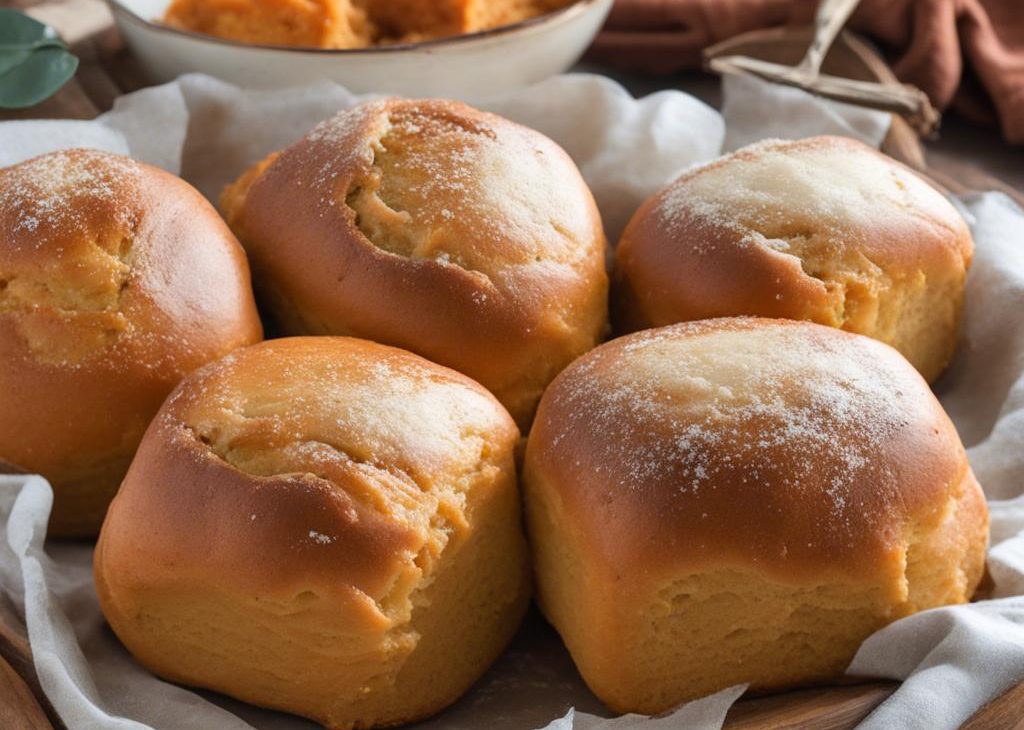


Fluffy, flaky, soft, and extra tall sweet potato dinner rolls are a wonderful accompaniment to a holiday meal—but you don’t have to wait for a holiday to enjoy them. Top with flaky sea salt and serve with homemade cinnamon butter for a side dish that will upstage the main course! If you’re a bread beginner, reference my Baking with Yeast Guide for answers to common yeast FAQs.
This recipe is brought to you in partnership with Red Star Yeast.
My popular soft dinner rolls are flaky, soft, and buttery. And so are today’s sweet potato version. But today’s recipe produces slightly sweeter and richer-tasting rolls. My team and I tested 4 versions until we found the perfect balance of flavor and fluff! My entire family (kids included) have been enjoying these for weeks. We LOVE them.
Have you ever had a potato roll? Gorgeously golden on top, and pillowy-soft throughout, potato rolls—traditionally made by the Pennsylvania Dutch—are made with potato flour replacing a portion of wheat flour, giving the bread a sweeter taste and softer texture than regular white rolls. The texture comes from the potato starch and its ability to absorb and retain more moisture than wheat can.
I learned from the brilliant bakers over at King Arthur Baking that the higher the starch level in your bread dough, the more tender your resulting bread will be. The potato (including sweet potatoes) is one of the starchiest vegetables out there. So when you add potato to your bread dough you’re upping the dough’s starch content, effectively increasing the resulting bread’s total liquid retention—which translates to bread with soft, moist texture and a long shelf life.
An added benefit is potatoes also boost the overall nutritional value, making it comparable to whole-wheat bread for fiber and nutrients such as zinc and iron, with significantly more potassium than either white or whole-wheat bread.
Now, we are taking this concept for potato rolls and using sweet potato instead. This means even more sweetness, plus an added boost of vitamin A! (Not trying to pretend these rolls are healthy… but we’ll take our vitamins where we can get them, right?)
While the starch from the sweet potato already makes for a soft texture, we’re also using butter, eggs, and whole milk to make a rich dough that turns out perfectly pillowy yeast rolls. Here’s a quick overview of the difference in these two types of bread doughs:
Peel, chop, and boil a sweet potato until tender. This takes about 10–12 minutes. Once your sweet potato is soft, drain and mash it. You can do this with a potato masher, pastry cutter, fork, or even an electric mixer or food processor.
The next step is to proof your yeast, a step I take even if I’m using instant yeast. All you do is mix the yeast with the warm liquid (milk), and a little sugar (honey). Cover and let it sit for 5–10 minutes until foamy and frothy on top. This proves your yeast is active and ready to get to work.
Then, add the rest of the ingredients to form a soft dough. (The mashed sweet potato will have cooled a bit by now.) Add enough flour for the dough to come together into a kneadable mass; it should be pulling away from the sides of the stand mixer’s bowl.
The dough should feel slightly tacky, but not overly sticky. On a lightly floured work surface, using the heels of your hands, stretch and fold the dough with gentle motion..
. It’s smooth and stretchy, and ready to rise. Place the dough in a large greased bowl, turn the dough to coat it in the oil, and then cover it and set it aside..
Fluffy, flaky, soft, and extra tall sweet potato dinner rolls are a wonderful accompaniment to a holiday meal—but you don’t have to wait for a holiday to enjoy them. Top with flaky sea salt and serve with homemade cinnamon butter for a side dish that will upstage the main course! If you're a bread beginner, reference my Baking with Yeast Guide for answers to common yeast FAQs.